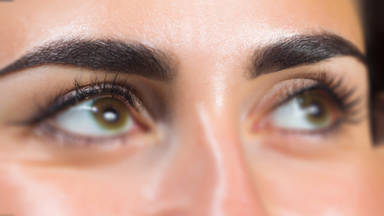
Microblading sounds awesome since it allows you to achieve perfectly shaped brows with just a few cuts. Nevertheless, you might want to know the answers to some key questions before undergoing the procedure. Whether micro-bladed eyebrows last for a long time or if they only last for a short time like a few months, for example, would be interesting to know. Microblading should only be undertaken after a thorough consultation with the individual, during which all of these factors should be discussed.
Eyebrow microblading only affects the surface of the skin on the epidermis, regardless of the method you use, whether it is PhiBrows or some other method. Due to its effect on the epidermis, the work is very susceptible to fading and absorption by the skin.
It's important for people who are considering microblading or PhiBrows to understand that it's a superficial procedure that can last between eight weeks and a year. This duration is different for people with dry skin and those with oily skin. A pigmentation tattoo applied to oily skin will last for a shorter period of time than a tattoo applied to dry skin. Using oil-based colors for microblading on oily skin is not possible, and it is recommended to use water-based colors. The results of your microblading process can be maintained on oily skin, only if you use water to base your work and pigmentation.
It does not matter whether the skin is dry or oily when it comes to drawing the microblading brow lines. On oily skin, however, drawing the microblading lines too close together can result in shadowed lines rather than hachure. The reason for this is that oily skin is more resistant to pigmentation.
Even if you use premium materials and equipment, eyebrow microblading lines will only last for some time between eight weeks to a year at most, so don't expect more.
There are different shades of skin. Different types of skin have different shades. If you have white skin, brown skin, or dark skin, you may need to use a different cartridge color for each type of skin. Using microblading on light colors will cause the tattoo to fade much more quickly. In most cases, people want light colors with a long life cycle, which is impossible to achieve and beyond the reasonable expectation for most people. A darker color lasts longer, especially on dry skin. Nevertheless, it is still important to choose dark colors according to the skin's natural color to avoid causing unwanted gray or red backgrounds. Cool colors should be used on warm skin types and warm colors should be used on cool skin types.
Using neutralizers can help you get rid of unwanted hachure background colors. Some microblading cartridge colors which are available in the market have high gray pigment concentrations. If there is too much gray in your cartridge, you might use orange cartridge color to neutralize it. Hence, orange color is sometimes needed as well.
Additionally, the angle and pressure of the hand are also critical to this process, which can increase the durability of the pigment if done correctly. When applying the microblading lines, ensure that your hand forms a 90-degree angle with the face. The cartridge tip is the only part of the cartridge you should use. Using the broad side of the cartridge for hachuring is therefore a bad idea.
It is not possible to repeat the eyebrow hachuring process more than three times in one session. Despite the fact that some artists claim they can repeat the process many more times, this is not true and is not the correct method to apply microblading.
As the name implies, micro-blading is a procedure that takes place on a micro scale and needs precision. This procedure takes place on the epidermis layer of the skin. This means that no bleeding should occur while working between the dermis and epidermis layers. It is essential that you avoid bleeding entirely if you want lasting results.
There is an exception to this rule for very thin skin. In this case, you may see some blood plasma during the microblading procedure. It is important that you handle such situations correctly during the application of microblading so that the results will last as long as possible. It is reasonable to expect that the hachures will have a shorter lifespan if bleeding occurs during the process. Throughout this process, you aim to maximize the skin's ability to accept pigments and to keep the colors as durable as possible. There are two important layers of skin for microblading are: Epidermis, which is the superficial layer without veins and Dermis, which is the fatty layer with veins. In order to achieve the best results, micro-blading should be applied between these two layers. The takeaway here is that high amounts of bleeding will make skin less tolerant of pigmentation.
Increasing microblading's durability
As soon as the microblading procedure is completed, you need to take certain steps in order to maintain the hachures. There are numerous factors that can contribute to pigmentation loss, such as the chlorine in swimming pools, exposure to direct sunlight, tanning, hot tubs, and even pollution.
In order to get the longest lasting results from microblading, it is advisable to select a dark color instead of a light one.Another factor to consider is the type of your skin. It is important to consider whether your skin is oily or dry. The color you choose should be right for your skin type. There are also factors such as the quality of the ink, the angle of the hand, and last but not least, allowing the ink to remain on the tissue is essential. It is recommended that you let the ink remain on your eyebrows for ten minutes after undergoing eyebrow hachure process. When the ink remains on the skin for a longer period of time, the chances of the pigmentation being absorbed by the skin increase.









